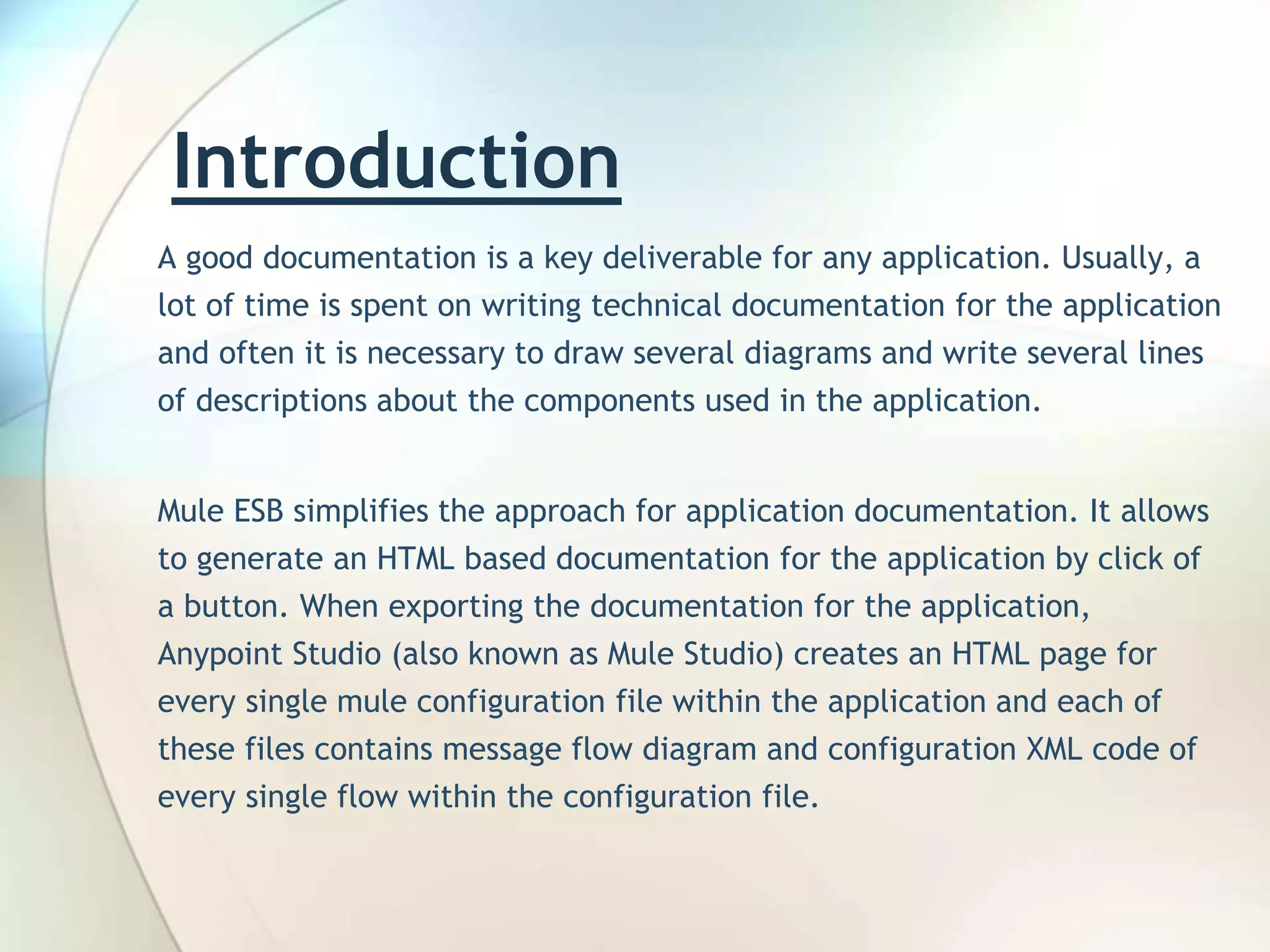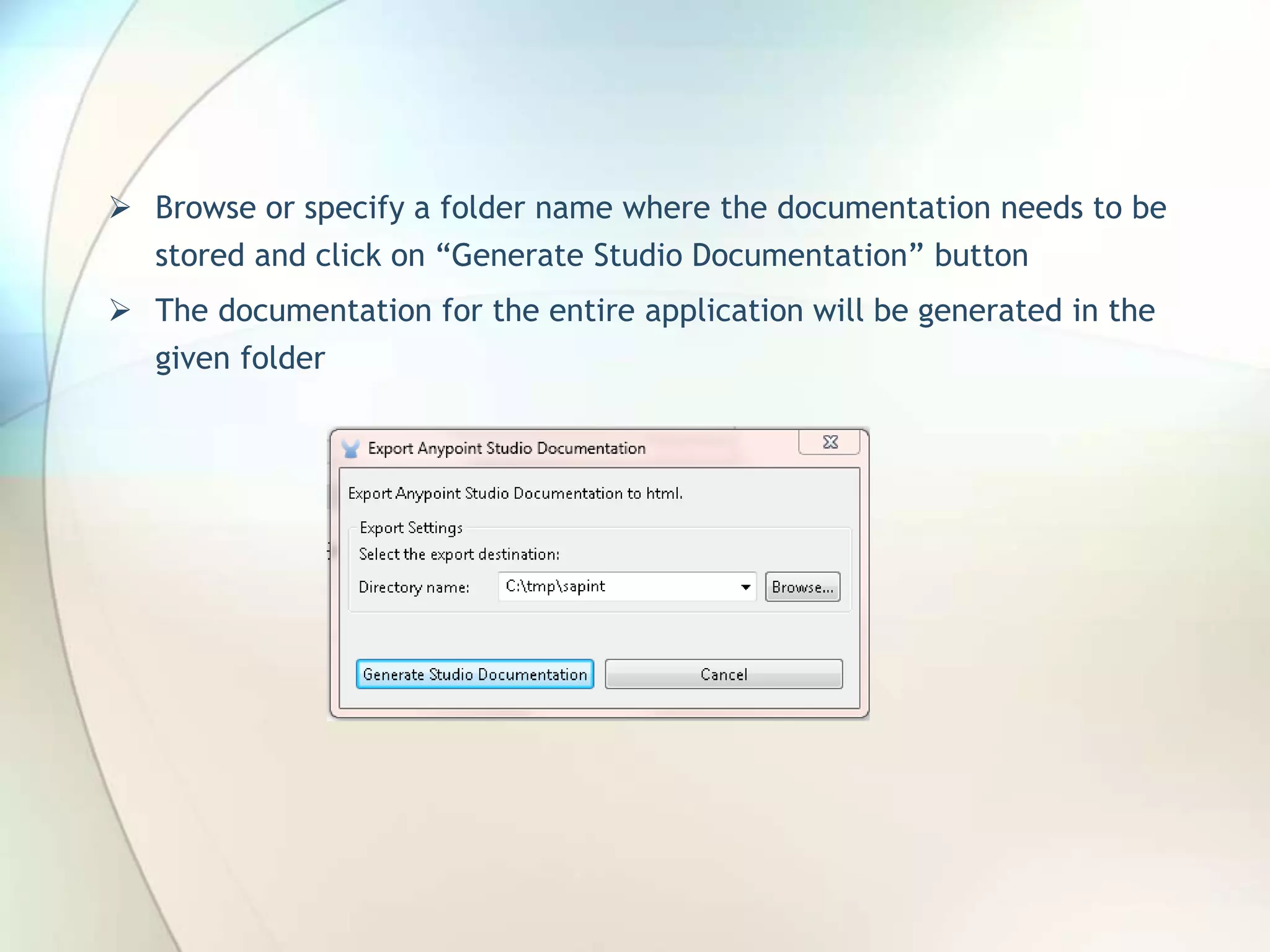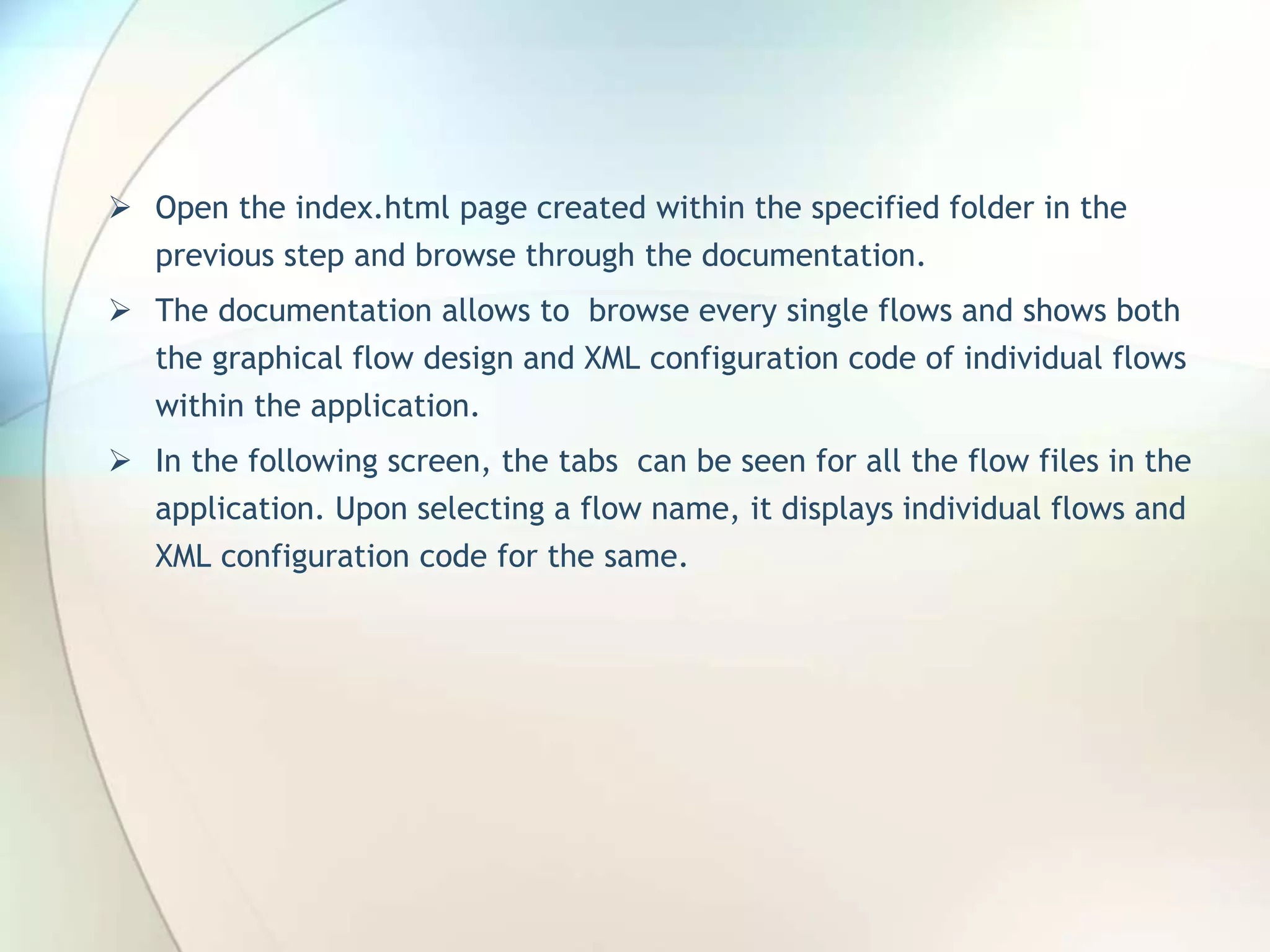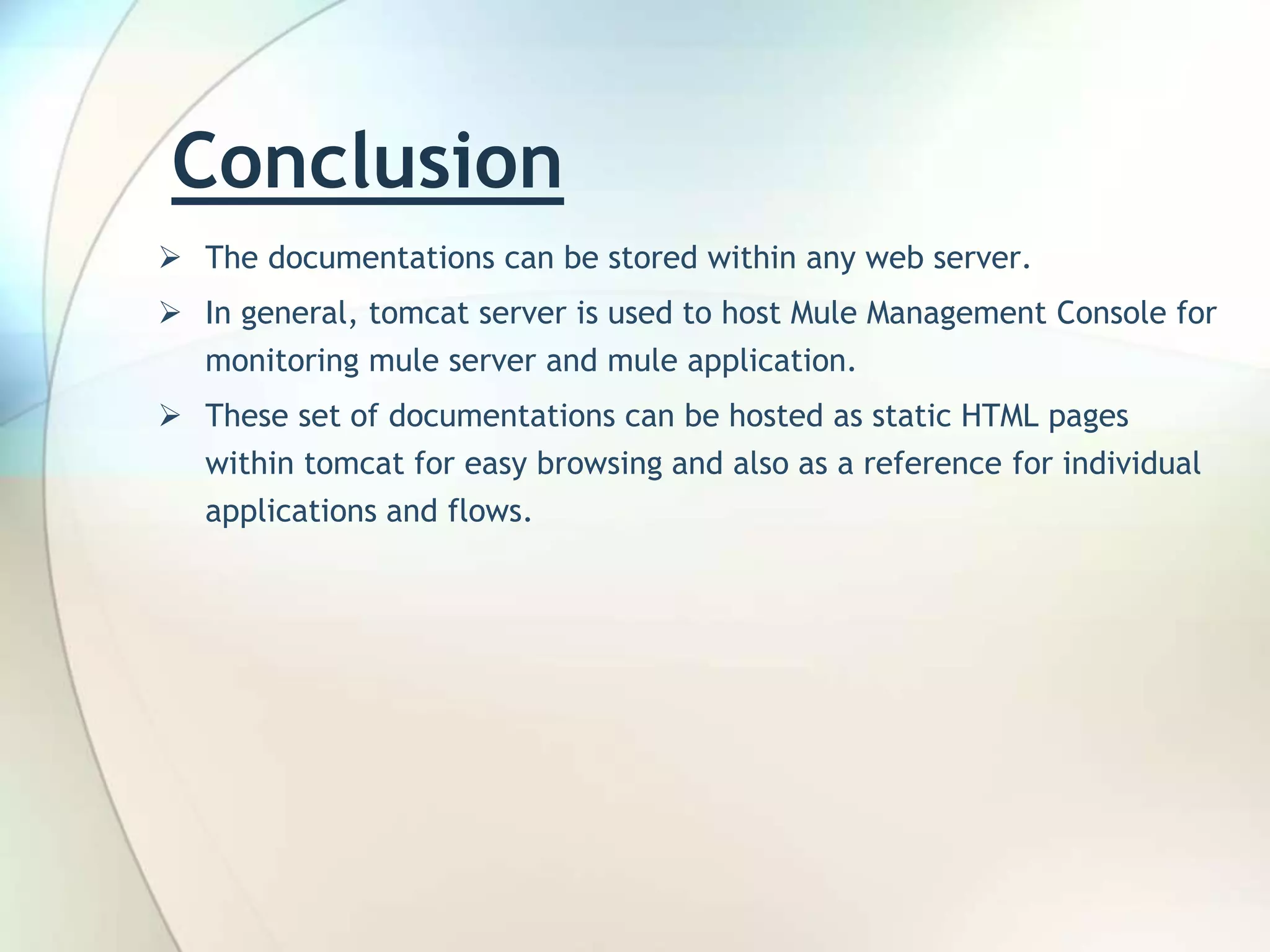Mule ESB allows developers to automatically generate documentation for their applications by clicking a button in Anypoint Studio. It will create an HTML page for each configuration file containing a message flow diagram and the XML configuration code. Developers can export the documentation by choosing a flow and specifying an output folder, generating an index.html page that allows browsing each individual flow and its XML code. This documentation can then be hosted on a web server like Tomcat for easy reference.







